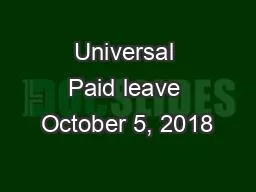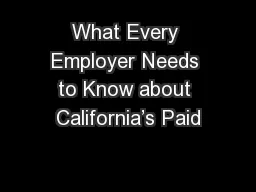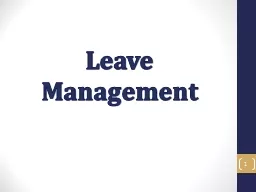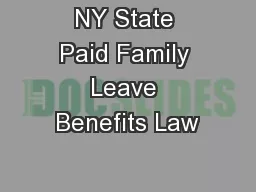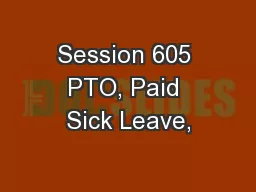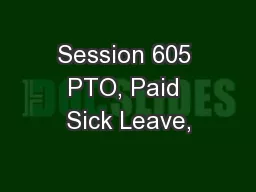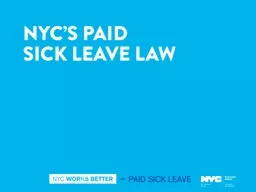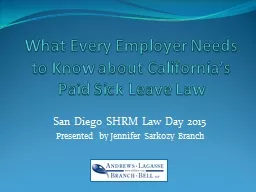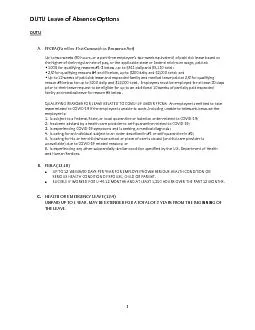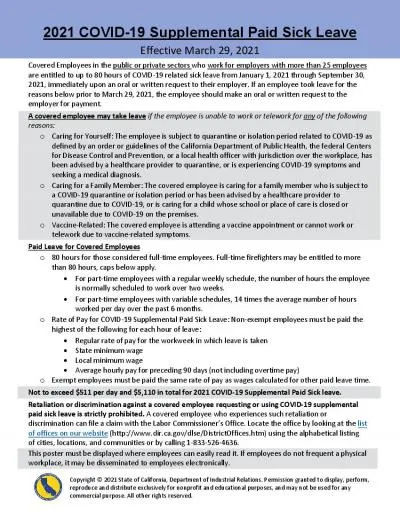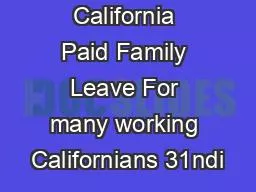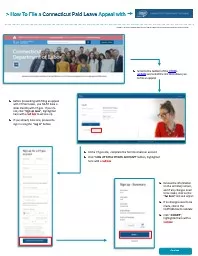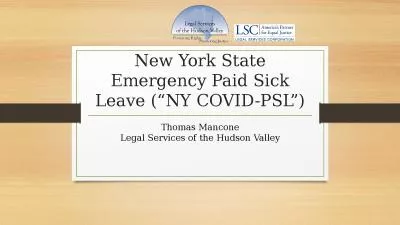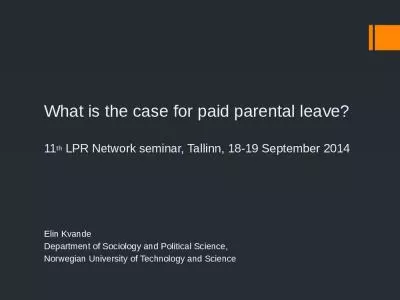PPT-Universal Paid leave October 5, 2018
Author : maxasp | Published Date : 2020-06-22
Tom Martin Partner Goldblatt Martin Pozen LLP 1625 K Street NW Suite 700 Washington DC 20006 tmartingmpllpcom 2027959190 This material is for informational purposes
Presentation Embed Code
Download Presentation
Download Presentation The PPT/PDF document "Universal Paid leave October 5, 2018" is the property of its rightful owner. Permission is granted to download and print the materials on this website for personal, non-commercial use only, and to display it on your personal computer provided you do not modify the materials and that you retain all copyright notices contained in the materials. By downloading content from our website, you accept the terms of this agreement.
Universal Paid leave October 5, 2018: Transcript
Download Rules Of Document
"Universal Paid leave October 5, 2018"The content belongs to its owner. You may download and print it for personal use, without modification, and keep all copyright notices. By downloading, you agree to these terms.
Related Documents

